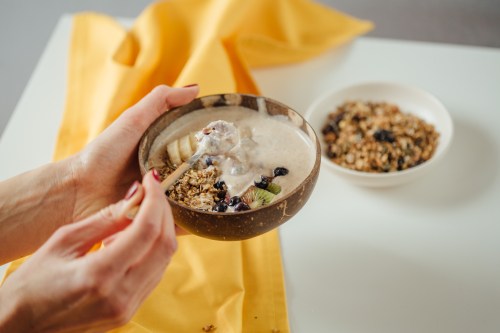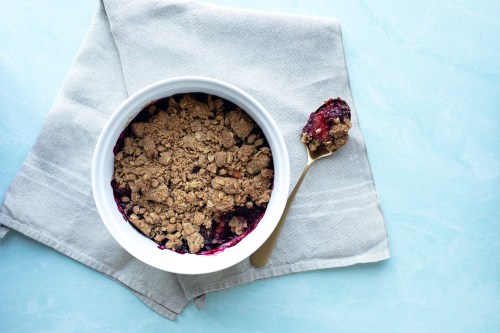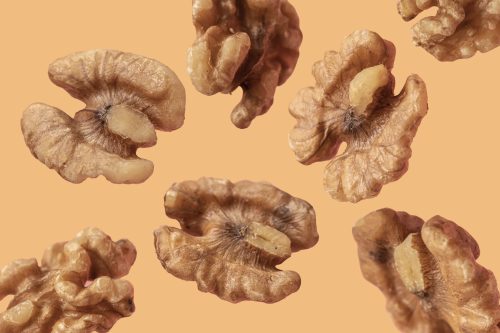What it’s really like to spend 24 hours at an Ayurvedic wellness retreat
Curious what it's like to stay at an Ayurvedic wellness reteat? Here's what upstate New York's YO1 Catskills wellness center is really like.

After a particularly busy month, I deemed myself in need of some deep pampering. I’d been burning the candle at both ends, doing extra work during the day, and attending events in the evenings. I was getting a lot done and having a lot of fun, but I was overextending myself, much to the chagrin of my newly blotchy skin and fatigued body. A two-pronged approach—healing my mind and body—seemed to be the best restorative measure I could take. So, I booked a stay at New York’s Ayurvedic retreat center, YO1, in the Catskills.
Having previously visited Ayurvedic spas in both California and India and also completed a panchakarma cleanse (an Ayurvedic detox for the five senses), I thought I generally knew what to expect during my stay at YO1. Based on those experiences and a recent consultation with Ayurveda practitioner Ananta Ripa Ajmera, director of Ayurveda at wellness center The Well, I anticipated I’d be on a caffeine and alcohol-free nutrition plan full of kitchari and other warming vegetarian foods. I also expected to be situated in a cozy environment where healers perform traditional practices, like shirodhara (the practice of drizzling oil over the scalp to stimulate melatonin production) and herbal massages tailored to each dosha (or Ayurvedic energy type). As it turned out, my expectations didn’t match up with what actually happened.
Here’s what happened at the Ayurvedic YO1 Catskills wellness center
When I first arrived at YO1, the gate attendant welcomed me to the palatial property with a “namaste.” Many more namastes greeted me throughout the check-in process, which included a tour of the facilities and a consultation to determine my dosha and my bespoke itinerary for the stay based on my personal energetic needs.
First up on the docket was a meeting with Ayurvedic counselor, Vidhyarani Shetty, who asked me several questions regarding my energy levels and emotional attitude before declaring my dosha as a fiery pitta dominant. This surprised me because previous readings have most often landed me as an airy vata. (After returning from my stay at YO1, I remained curious about this descrepancy, so I asked Ajmera for a second opinion. She confirmed that, occasionally, the three doshas can shift balance at different times in life.)
Next, I met with naturopathy counselor Naveen Sharma to fill my itinerary with treatments targeting my physical and energetic pain points, like knee pain, digestion, and hormonal imbalances. In addition to the general programming available to all visitors, like yoga and a gong bath (which is basically a sound-bath meditation, but guided by the sound waves of a gong), Sharma recommended I try an herbal powder treatment called Podikizhi, visit the reflexology rock pathway, and soak in a Dead Sea mud bath, all to tame my pitta fire.
Using a neti pot and tubes, the kriya ceremony clears the nasal passages in order to “bring balance to both the physical and pranic body, while aiding sinus conditions and allowing for clear breathing.”
With my personalized folder, holding that just-for-me schedule of events, I headed back to the residential wing to clock some shut-eye before an early-morning yoga session and a 6 a.m. purification ceremony, or “kriya.” Using a neti pot and tubes, the ceremony clears the nasal passages in order to “bring balance to both the physical and pranic body, while aiding sinus conditions and allowing for clear breathing,” Sharma says.
While my other treatments skewed relaxing and spa-like, certain offerings I saw on the menu might intimidate the uninitiated. Take spinal-spray therapy, a pressure wash that Sharma says, “soothes the spinal cord from neck to tailbone, supplying nervous energy all over the body [and is] recommended for those with high blood pressure and to induce sound sleep.”
But, no matter which treatments and experiences are on a given visitor’s itinerary, it would seem difficult for fears or jitters to subsist given the serene, sprawling grounds. There’s nothing like a panoramic view of a placid pond during a morning yoga session to ease any sense of worry in the world. (That’s what I ultimately found to be the case, at least.)
Eventually, the morning fast on my itinerary concluded, and lunch was served in the basement dining hall. Ravenous, I devoured purple sweet potato soup, guacamole with microgreens and a falafel platter, all of which was designed to nourish and stimulate the senses. Successfully stimulated and also happily full, I embarked on my final activity: a two-hour walk through the woods to digest not only the meal, but the entire experience. While YO1 may not have been what I expected to experience, it did successfully offer me an energetic reboot. I left the wellness retreat feeling much more centered than I did upon arrival.
Want to explore other wellness-focused travel options? Here are African safaris that are embracing wellness. Plus, these western Ranches are begging to be the destination for your next girls’ trip.










